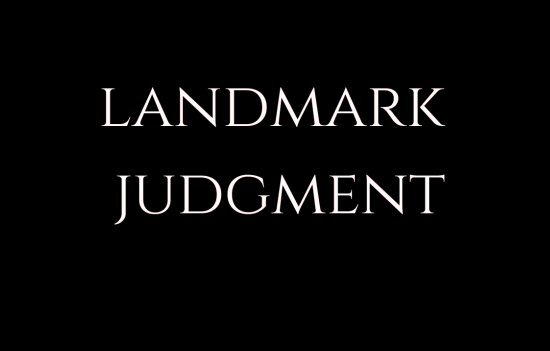CASE BRIEF
Appellant – India Cement Ltd.
Respondent- State Of Tamil Nadu.
Equivalent citations- 1990 AIR 85, 1989 SCR Supl. (1) 692
Bench – Venkataramiah, E.S. (Cj), Mukharji, Sabyasachi (J), Misra Rangnath, Oza, G.L. (J) Singh, K.N. (J), Natrajan, S. (J) Ray, B.C. (J)
Decided On: 25.10.1989
Statues Referred-
- The Constitution of India.
- Madras Panchayats Act, 1958.
- Mineral Concession Rules, 1960.
- Mines and Minerals (Regulation and Development ) Act, 1957.
Case Referred-
- H.R.S. Murthy v. Collector of Chittoor & Anr, 1964 6 SCR 666.
- Calcutta Gas Co. v. State of West Bengal 1962 3 SCR 1.
- Raja Jagannath Baksh Singh v. The State of U.P & Anr 1963 1 SCR 220.
Facts –
- The appellant is a public limited company.
- On 19th July 1963, the Govt. of Tamil Nadu sanctioned the grant to the appellant mining lease for limestone and kankar for a period of 20 years over an extent of 133.91 acres of land.
- The appellant started mining operations soon after the execution of the lease deed and has ever since been paying the royalties, dead rents, and other amounts payable under the Deed.
- On 10th July, 1965, the Collector sent a notice demanding cess or royalty payable under the Act on minerals carried on during the period 1.07.1961 to 31.12.1964.
- Thereafter, A Writ Petition was filed in the High Court Of Madras. The High Court of Madras dismissed the writ petition holding that the cess levied under Section 115 of the act is a tax on land and was within the competence of the State legislature.
- Appellant filed an appeal in the Supreme Court of India against the order of the High Court.
Issue-
- Whether levy of cess on royalty is within the competence of the State Legislature?
Contentions by Parties-
Appellant’s Arguments
- That the levy of cess on royalty was nothing but a tax on royalty and was, therefore, ultra vires the State legislature.
- That Section 115 of the Madras Panchayats Act, 1958 read with explanation contravened Section 9 of the Mines and Minerals (Regulation and Development ) Act, 1957.
- That the impugned measure being a tax, not on the share of the produce of the land but royalty; royalty being the return received from the produce of the land, revenue was payable for winning minerals from the land.
- That it cannot be attributable to Entry 45 of List II of the 7th Schedule, being not a land revenue.
- That Explanation to Section 115(1) was added and there was an amendment as we have noted before.
- That very Explanation makes a distinction between land revenue as such and royalty which by amendment is deemed to be land revenue.
- That the expression ‘royalty’ in Section 115 and Section 115 of the Madras Panchayats Act, 1958 cannot mean land revenue properly called or conventionally known, which is separate and distinct from royalty.
Respondent’s Arguments
- That the cess in the present case was a levy in respect of land and could be justified or sustained either under entry 49, 50 or 45 of List II of the 7th Schedule to the Constitution.
- That the expression ‘lands’ in Entry 49 is wide enough to include agricultural land as well as non-agricultural land.
- That entries should not be so construed as to make any entry redundant.
- That even in pith and substance the tax fell to entry 50 of List II, it would be controlled by legislation under entry 54 of list I.
- That the State has a right to tax minerals. It was further contended that if tax is levied, it will not be irrational to correlate it to the value of the property and to make some kind of annual value basis of tax without intending to tax the income.
- That in entry 50 of List II, there is no limitation to the taxing power of the State.
- That in fact what is imposed under Section 115 is not a cess on the mining rights or on royalty but is a tax on land which clearly falls within the authority of the State legislature in Entry 49 of List II.
Judgment
The Supreme Court of India in this case held the following:
- Royalty which is indirectly connected with land, cannot be said to be a tax directly on land as a unit.
- Royalty is a tax, and as such a cess on royalty being a tax on royalty, is beyond the competence of the State Legislature because section 9 of the Central Act covers the field and the State Legislature is denuded of its competence under entry 23 of List II.
- In any event, cess on royalty cannot be sustained under entry 49 of List II as being a tax on land.
Conclusion
It can be perceived from this case that mining royalty itself is tax there would not be service tax again on mining royalty as the tax cannot be imposed on it.

